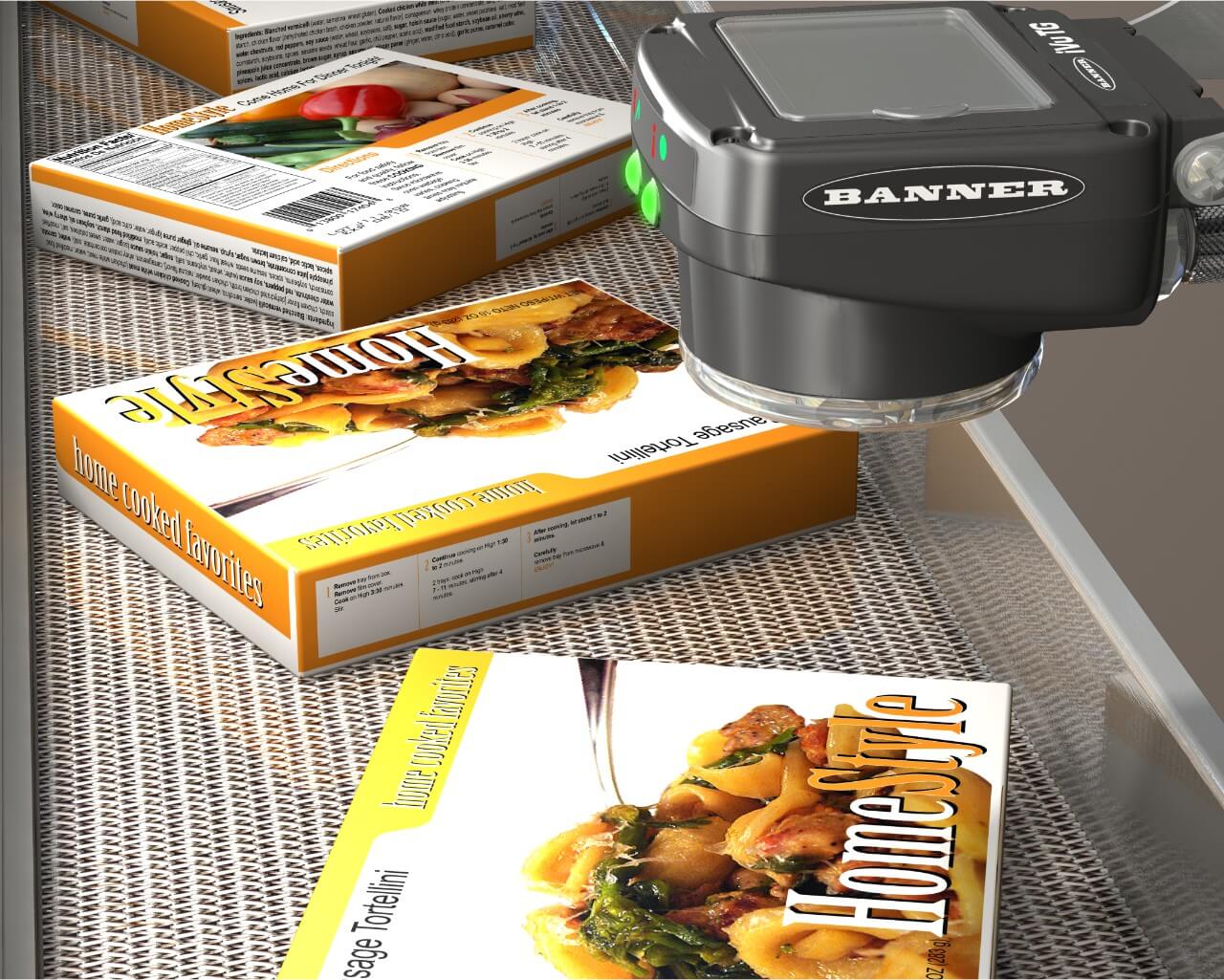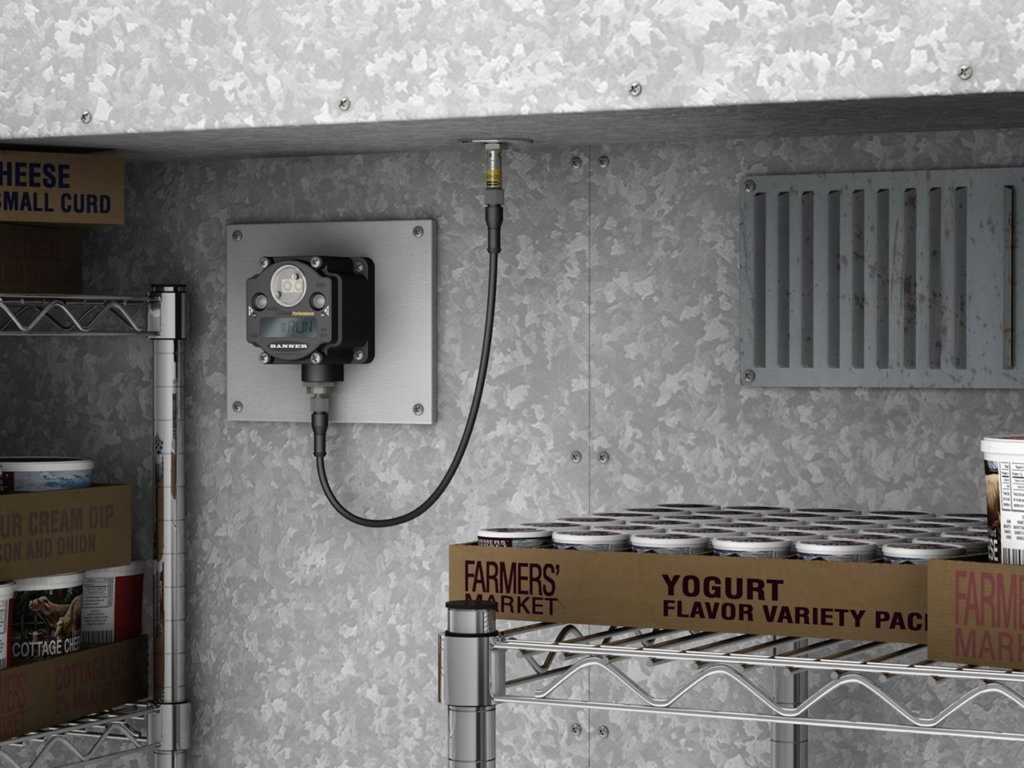
Sensor Solutions for Food Safety Hazards
Product recall is costly not only in terms of lost revenue, wasted materials, and production time but also in terms of brand reputation and brand loyalty. The faster food safety issues can be addressed and mitigated, the lower the risk of a large-scale recall. Three of the most common hazards to food safety are 1) undisclosed allergens, 2) pathogens, and 3) physical hazards. Choosing the right sensor technology for your application can go a long way towards reducing your risk in each of these areas, saving you time and money in the long term.

1. Undisclosed Allergens
One significant food safety hazard is undisclosed allergens. Food allergies are potentially lethal to the consumer, so it is essential that food packaging accurately discloses the allergens present in the food item.
One error that can occur during the processing of packaged foods is when a product is placed in the incorrect packaging, resulting in inaccurate labeling of food contents. For example, if a cheese-stuffed hot dog is accidentally packaged in a regular hot dog packaging, the package would not include the required milk allergen warning.
SOLUTION: VISION SENSOR FOR LABEL VERIFICATION
A label verification technology is critical to ensuring that the proper labels are affixed to the right products. One very effective technology is a vision sensor, which can be used to verify the presence of the correct label on the packaged food item.
For example, bottle filling lines run many different types of products and require frequent changeovers. To prevent mislabeled bottles and ensure quality and food safety, a vision sensor can determine whether a label pattern matches a reference pattern taught to the device. Automating label inspections with a reliable vision solution improves quality control by reducing the risk of error common to manual inspections, which in turn helps reduce the incidence of product recall due to undisclosed allergens.

2. Pathogens (Biological Hazards)
Pathogens are another significant food safety concern. While there are many points at which biological hazards can be introduced to food products, temperature change is one of the most critical conditions for pathogen growth. For example, when lunch meat products are not lowered to the proper temperature quickly enough, or are not maintained at the correct temperature after processing, harmful bacteria will be allowed to grow. Ensuring that temperature levels remain appropriately controlled at all points—from food processing to distribution—can help prevent many biological hazards from reaching harmful levels.
SOLUTION: HYGIENIC SENSORS WITH REMOTE TEMPERATURE MONITORING CAPABILITIES
Monitoring and documenting temperatures throughout the food chain is imperative. However, manual documentation can be costly, requiring significant investments in time and resources.
Manual monitoring and documenting temperatures can be costly. An IIoT solution to this problem is wireless temperature sensors. Wirelessly-connected temperature sensors can be used to automate the documentation process by wirelessly transmitting data through a controller. Not only does a wireless solution allow for historical data to be stored and accessed in the future, but wireless sensors also allow for real-time condition monitoring.
This means that, if the temperature of a food storage area rises above a set threshold, instant alerts can be sent, warning a manager that temperature requires adjustment. These alerts can be made viewable in the HMI, sent via text message, and/or set to initiate a warning signal on a tower light or other visual indicator. The ability to identify potentially dangerous temperature changes as they occur can help prevent product spoilage, saving costs.

3. Physical Hazards
Physical hazards refer to potentially harmful, non-food particles that end up packaged with the food, often due to breakage of mechanical parts on the machine. While metal detectors can identify small pieces of metal before the product is distributed, other materials such as plastic and glass could slip by unnoticed, risking the health of the end customer if they consume a foreign object in their food.
SOLUTION: RUGGED SENSORS WITH ALL PLASTIC HOUSING
Sensors are not the only machine components from which pieces can break off and fall into food, but they are still important to consider. In environments with frequent washdown, it is important to ensure that the product is rugged enough to withstand high temperatures and pressure, and a high chemical resistance may also be necessary to withstand caustic cleaning solutions. In these applications, look for an IP69K-rated sensor that has been thoroughly tested to withstand harsh environments.
In addition, the material construction of the sensor makes a difference. While stainless steel might seem like the intuitive choice for food applications, a metal photoelectric sensor will always still have plastic components (e.g. window, light pipes, etc.) and plastic-to-metal joints that when subjected to temperature can become dislodged and fall.
A photoelectric sensor made entirely of plastic has plastic-to-plastic joints that are ultrasonically welded together, becoming a single piece. This reduces the risk of the sensor window becoming dislodged, and the sensor is better protected against the ingress of water.
Contact one of our experts for more information about food safety.
